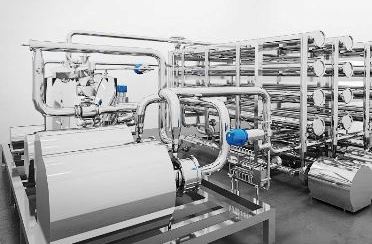Minimising Product Losses by Better Dryer Design and Advanced Filtration Techniques

The elimination of waste in food and dairy plants provides a long list of benefits: increased yield, reduced power consumption, lower emissions, reduced disposal costs, the development of new and valuable products and, in some cases the reduction of water consumption virtually to zero. It’s hardly surprising, therefore that this has become a prime focus for many operators in an effort to edge one step ahead of the competition both in terms of productivity and the effect on the wider environment.
In response to, and as a driver of, customer demand, GEA has directed much of its expertise in recent years to developing ever more efficient ways of reducing or eliminating waste. It is this focus that has kept its technology at the cutting edge of science and its customers as leaders in their markets.
Although water and power conservation are vitally important processing goals, this article looks specifically at the techniques employed by GEA to reduce product losses from food and dairy plants.
Powder Recovery
The most efficient way to recover waste powder from dryers is to avoid its creation in the first place. In recent years, dryer design has taken advantage of the rapid growth in computing power to facilitate Computerised Fluid Dynamics and advanced particle design techniques to manage airflow and pressure drops within the dryer, thereby increasing yields and reducing the loads on filtration equipment. Simultaneously, advances in sanitary bag filters (such as SANICIPTM from GEA) and cyclone technology mean that any residual powder in the exhaust air can be removed more effectively and returned to the process.
24-hour Running
 Probably the greatest recent advance for the reduction of waste is the increase in the 24-hour capability of drying plants. In the past, drying plants for whole milk or baby formula powders would run for around 20 hours before shutting down for cleaning. This start/stop process was extremely wasteful in both power consumption and product losses.
Probably the greatest recent advance for the reduction of waste is the increase in the 24-hour capability of drying plants. In the past, drying plants for whole milk or baby formula powders would run for around 20 hours before shutting down for cleaning. This start/stop process was extremely wasteful in both power consumption and product losses.
To meet the efficiency and emission requirements of customers, however, today’s GEA plants are being designed with multiple feed lines and twin evaporators allowing the plant to run 24-hours a day with the wet parts of the feed system closing down alternately for cleaning. This reduces the deposits in the plant thereby avoiding product losses and the frequency of down-graded products.
Waste Recovery From Liquid Streams
Even with 24-hour running, wash water streams inevitably contain some residual product. Wash water has a high BOD (Biochemical Oxygen Demand) and may not, therefore, be released into waterways. Advanced filtration systems have the ability not only to recover product suspended in the waste but to purify the water sufficiently for reuse in the process – in some cases making plants self-sufficient in water. Recovering product, such as cheese, in this way has a significant effect on yield.
Microfiltration can be used to remove fats and proteins from CIP (Clean In Place) liquid with nanofiltration removing soluble materials. The process leaves the cleaning chemicals in the wash water allowing it to be reused many times.
In the same way it is possible for salt brines, used in the curing of meat and cheese products, to be rejuvenated by extracting yeasts and mould cells allowing the brine to be reused within the process almost indefinitely and avoiding the need for expensive pasteurisation equipment.
New Product Development
Developments in membrane filtration in recent years have given life to new products that would previously have been considered waste. The cheese making industry, for example, has seen dramatic changes that have created a whole new range of products that have provided significant health benefits to many.
The whey stream from cheese making was at one time considered to be a waste product. Today, however, it is possible to use membrane filtration to separate the proteins in whey to create a family of advanced products. WPC 35, for example, is a cheap substitute for skim milk. Other products with increasing protein content all have beneficial health properties with the ultimate, WPI 90, being in great demand by body builders and athletes for the fast replenishment of muscle tissue following exercise. It is also an ingredient in infant formula and used for treating degenerative muscle disease in the elderly.
The resulting permeate from WPI production can be treated further with nanofiltration and reverse osmosis to recover vital minerals, mainly calcium and phosphorous, that are high-quality, natural mineral substitutes with high bio-availability. The resulting water can be returned to the process.
Some waste from a food or dairy plant is inevitable. However, the innovations described above, and many more still under development by GEA, have reduced waste dramatically in recent years. The trend continues towards greater efficiency, lower emissions and a better environment for us all.

































